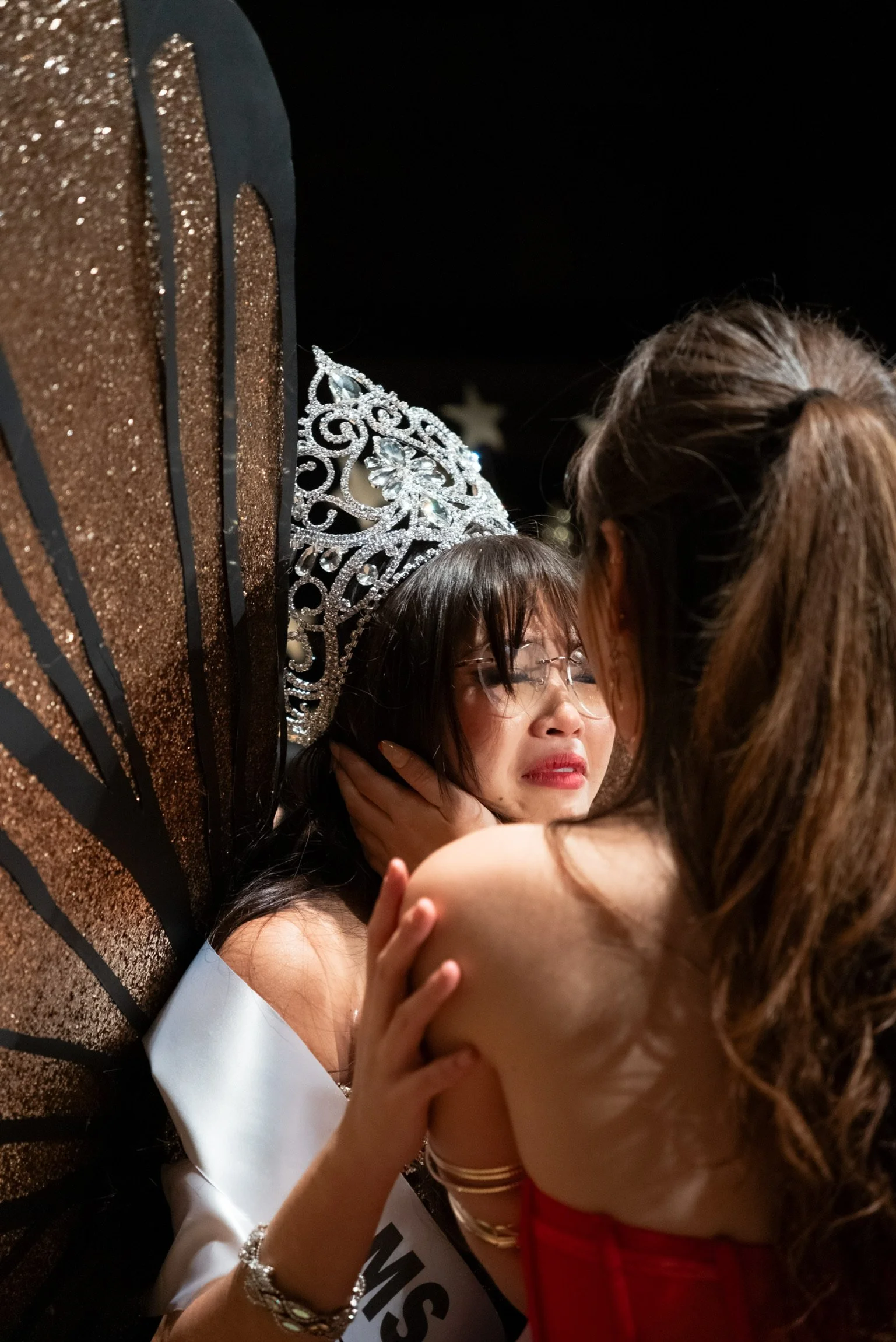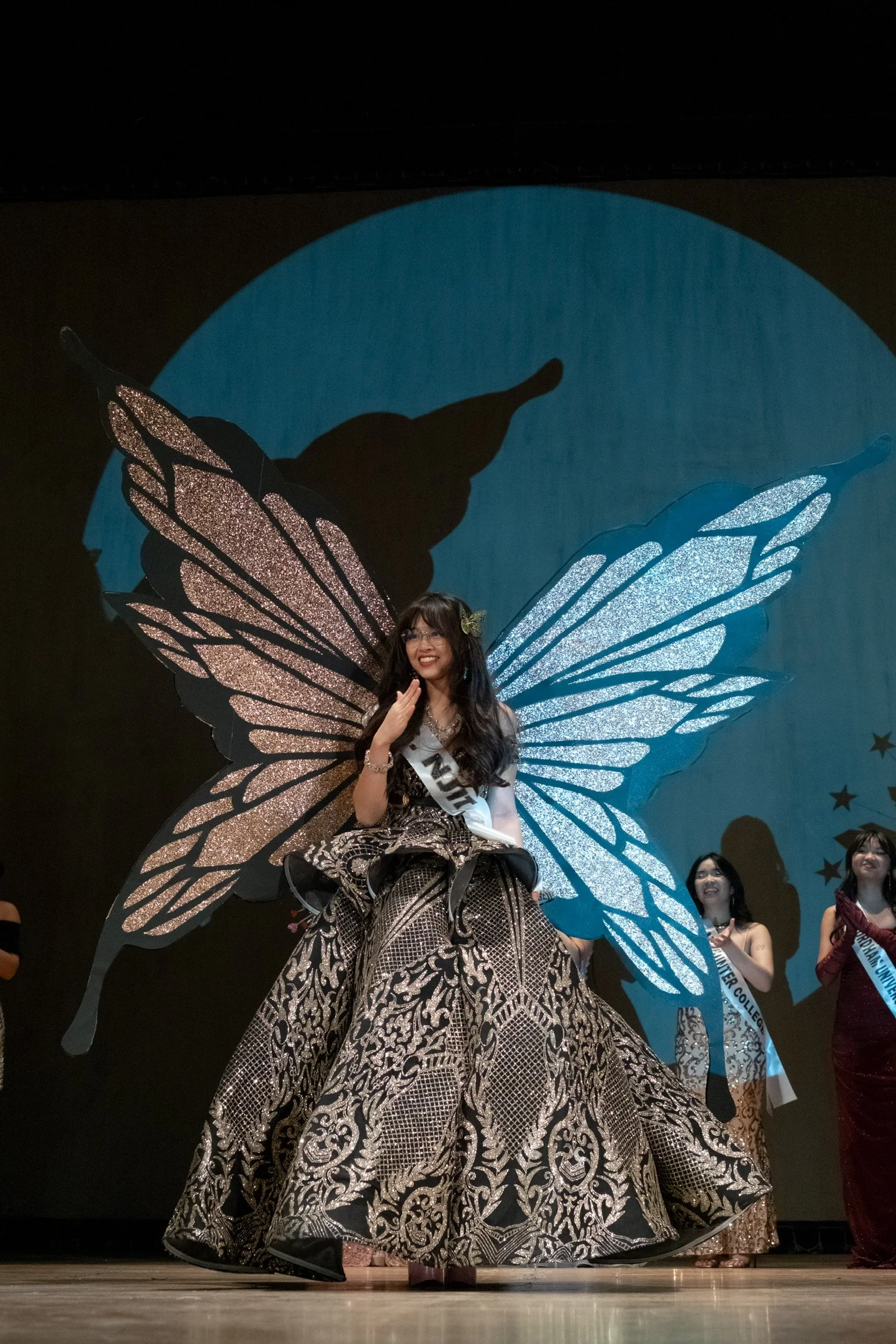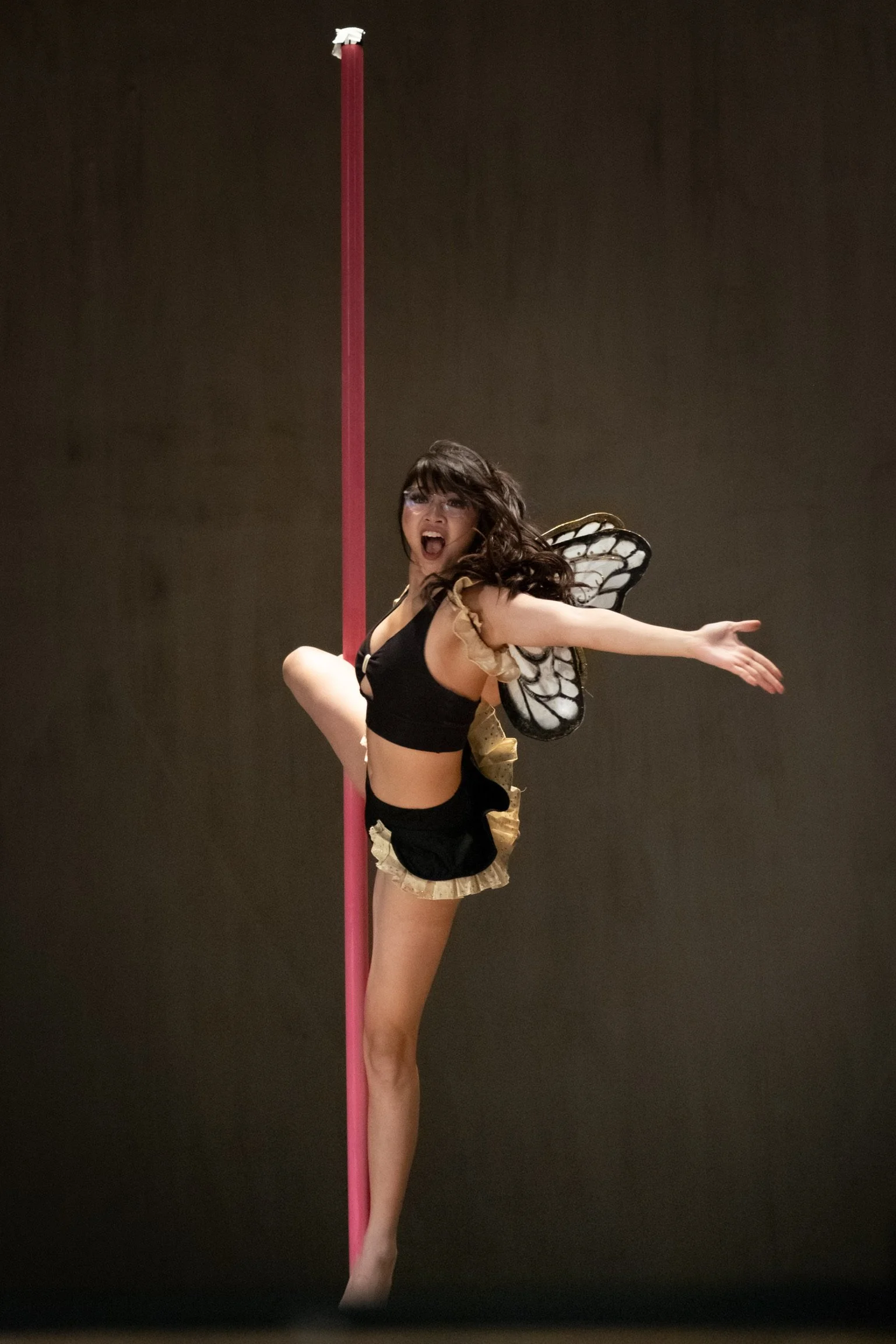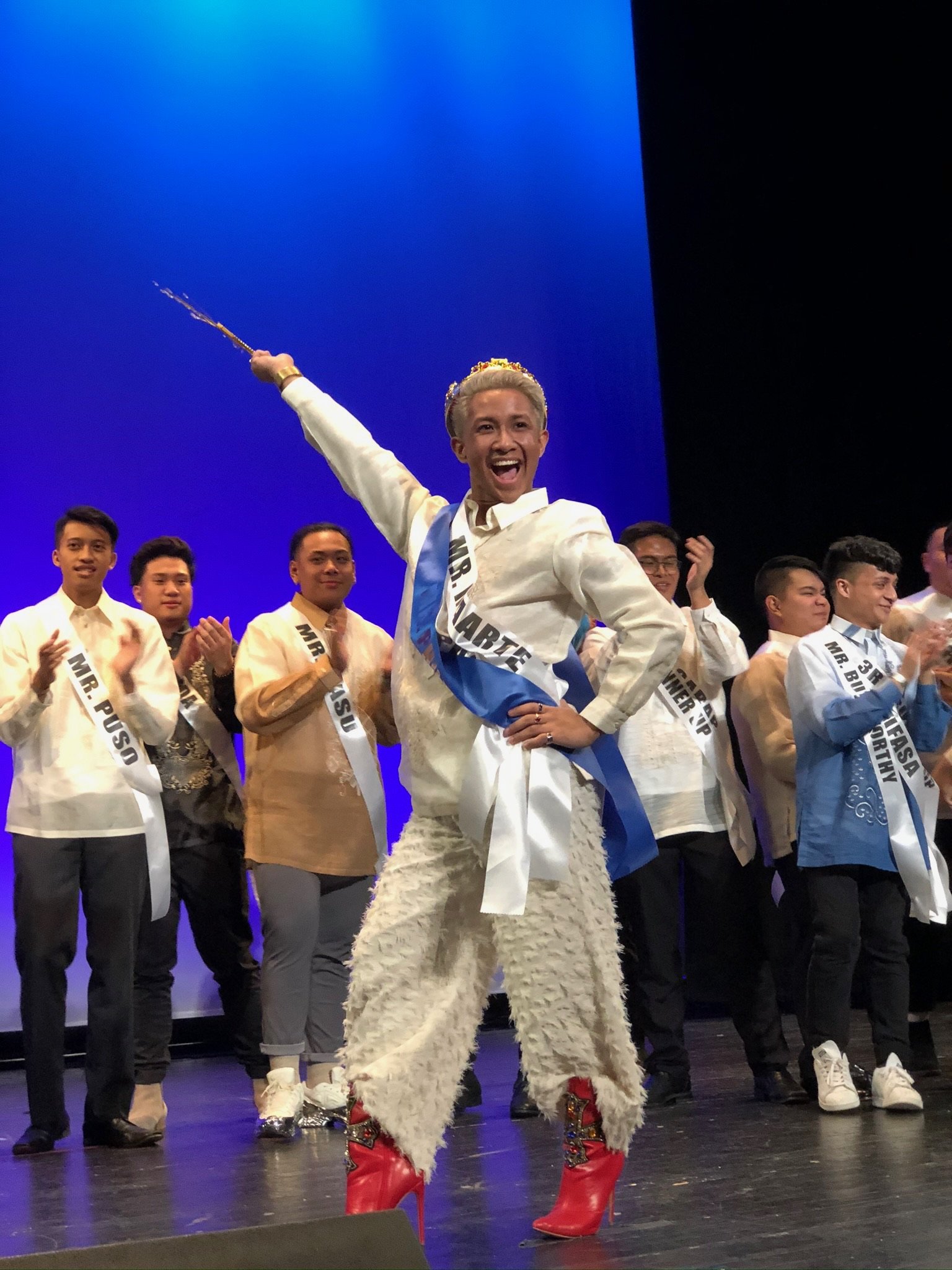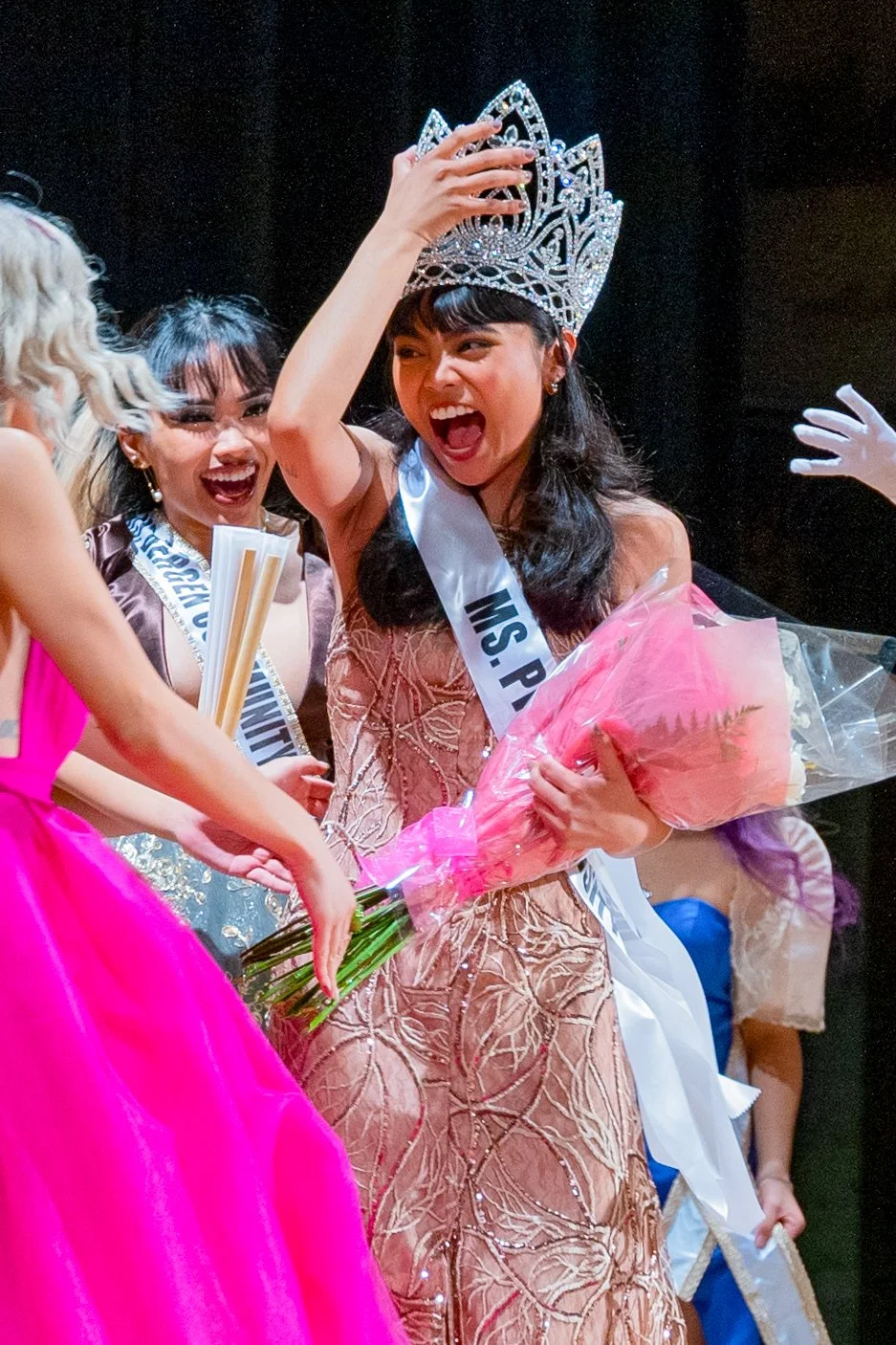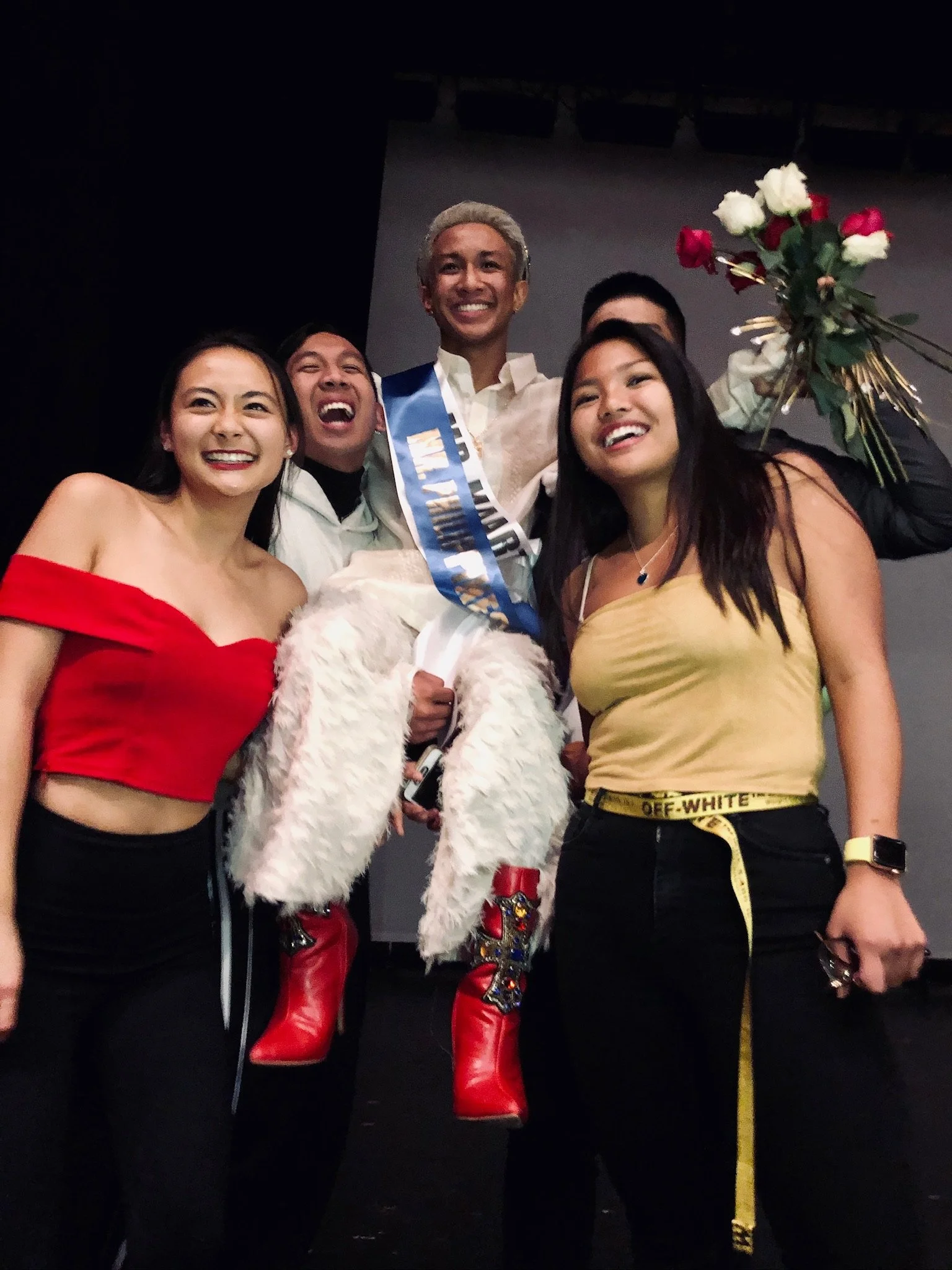Into the Electrifying World of Filipino American Student Pageants
Words: Cass Guinto | Photography: Lucas Ali & Raymond Tisch
When Ligaya Manalastas watched her first Ms. Philippines pageant in 2023, she didn’t expect to come out of it forever changed.
The 26 contestants, each representing a different Filipino collegiate organization, weren’t just performing. They were narrating their lives through movement and sound. With boundless creativity, they crafted heart-wrenching meditations on the Filipina/x experience. Everything Manalastas thought she knew about her identity was reconstructed before her very eyes. As if hearing a siren call, she was beckoned to the stage.
Photo by Raymond Tisch
“I wrote in my notes that night, ‘I’m going to do [Ms. Philippines],’” says Manalastas, who went on to win Ms. Philippines 2024 hosted by Rutgers University – Newark’s Filipino Student Association. “The idea seduced me. I was so entranced – they were just floating with beauty and grace. Why would you not want to follow this divine power?”
Meanwhile in Upper Manhattan, Mr. Philippines is its own spectacle. Six years after competing, artist and dancer Jeffrey Pelayo still remembers his very first moments on stage.
“I became this tigress, trying to have a straight face while hearing the whole world in my ears,” says Pelayo, who placed first in Mr. Philippines 2019 hosted by Columbia University’s Liga Filipina and New York University’s International Filipino Association.
It isn’t a coincidence that these two pageants are only a half-hour drive away from each other: together they make up part of a vibrant and years-long legacy of Filipino American student pageantry. In the New York metropolitan area, Ms. and Mr. Philippines are cornerstones of the Filipino American college experience. While onstage, contestants tackle topics that are often considered taboo in the community: intergenerational trauma, sexuality, gender identity, and more. In bringing their stories to the stage where a palpable longing for creativity meets the thrill of competition, the auditorium becomes a space where cultural wounds heal and transform.
Ms. and Mr. Philippines, which are scheduled for January and November respectively, share a format: opening dance, contestant introductions, gown or barong walk, cultural performance, talent showcase, and finally the sash and crown ceremony. Both events take several months of planning to execute, with the entire operation being 100% volunteer and student-led.
Christopher Florentino, who has organized and hosted multiple Ms. Philippines pageants, calls it a labour of love.
Photo by Lucas Ali
Photo by Lucas Ali
“Many see the pageants as an opportunity to curate their dream performances, and with the audience they never knew they needed.”
“[Event production] is something that people do as an actual career, and you’re just doing this because you love your culture,” he says. “How can we show the beauty of Filipino American culture here in the northeast, but also, what did the Filipino diaspora have to go through to appreciate that beauty?”
Pageantry in the Philippines is over a century old, dating back to 1908 with the first Manila Carnival Queen Contest. The popularity of this event led to the creation of the “Miss Philippines” title in 1926, with contestants from different regions. Today, the Philippines stands as the first and only Asian country to have had contestants win all of the “Big Four” international beauty pageants: Miss Universe, Miss World, Miss International, and Miss Earth. This coveted legacy extends to male pageants as well, with the Philippines having the most total wins across Mister Global, Man of the World, and Mister International.
Now, Filipino college students in the U.S. are leaving their own mark on the pageant world. Though the competitive spirit is there, Mr. and Ms. Philippines contestants are motivated by more than just a crown. Many see the pageants as an opportunity to curate their dream performances, and with the audience they never knew they needed.
“I wanted [my family] to just see everyone cheer for me. To see how I’m loved. I feel like my family hadn’t actually seen me perform like that before; they hadn’t seen me put on the red heels and dance in front of a thousand people… I wanted them to see that I’m very passionate about my culture,” says Pelayo. “[When I won], a whole crowd of 40 people bombarded me. They lifted me up like those movies with the baseball players and I was like ‘God, I get to live all my fantasies tonight.’”
Contestants also get to weave in the annual pageant themes to their performances and presentations, which speak to different facets of Filipino history and identity. Manalastas, for example, embodied the 2024 Ms. Philippines theme of alaala (remembrance) using butterfly motifs throughout her set.
Photo by Raymond Tisch
“Butterflies have a very cyclical nature, and it's almost like I'm the reincarnation of all of the female lives before me,” she says. Manalastas also wore a gown that was gifted from her Tito Mok, who goes by Wilma Fingerfit as his drag persona.
When it comes to cultural relics, pageants are not often part of the conversation. However, if there is anything the Ms. and Mr. Philippines pageants demonstrate on a yearly basis, it’s that performance and cultural preservation go hand in hand. Being on stage is already a visceral experience. Combined with the inherent vulnerability in sharing community grief and joy, there are few places more fitting for this emotional paradox than a pageant.
Actor Lianah Sta. Ana won Ms. Philippines in 2022, which centered on the theme of tadhana (destiny). During her Q&A, she was asked about Filipino Americans using the internet to learn cultural dances and traditions, as opposed to inheriting the knowledge from their family. As Sta. Ana gave her answer, she began to tear up. She then returned the question back to the audience: what conditions have led Filipino Americans to rely on the internet in the first place?
“In that moment I was feeling the grief and the loss, but also the frustration with why loss is our reality to begin with,” says Sta. Ana.
It is clear, then, that from the local to international level, pageants aren’t always just glitz and glamour. They can be a ferocious and untamed cultural storm. The “set” represents every truth we want to share, spilling onto the stage and swallowing everything inside. It’s joy, rage, laughter, and loss – shattered and created anew through performance.

